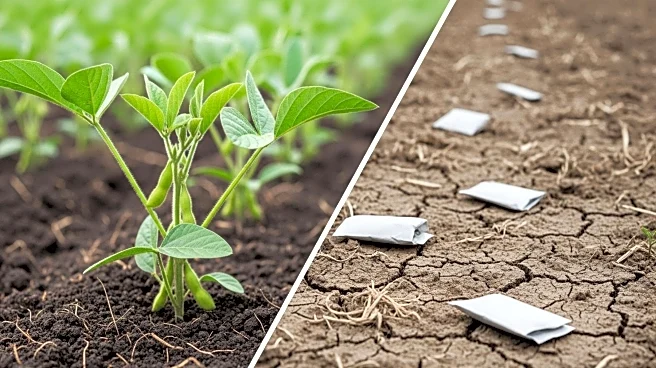What is the story about?
What's Happening?
Butter prices in the United States have experienced a significant decline, reaching a four-year low, according to recent data from the CME Group. As of late September, butter prices were recorded at $1.72 per pound, marking a 37% decrease from the previous year. This drop is attributed to an increase in milk production and higher butterfat levels in milk, driven by advancements in genetics and improved feeding practices. The USDA's latest reports indicate that milk production has been consistently higher in 2025, with a 1.8% increase in the top 24 milk-producing states compared to the previous year. This surplus in milk and cream has led to a decrease in butter prices, despite strong export demand.
Why It's Important?
The decline in butter prices has significant implications for both domestic and international markets. Lower prices make U.S. butter more competitive globally, potentially boosting exports. However, the domestic market faces challenges as consumer demand for dairy products, including butter, has decreased slightly. The USDA forecasts suggest that butter prices may remain low into 2026, affecting dairy farmers and producers who may face reduced revenues. The situation highlights the delicate balance between production levels and market demand, with potential impacts on the dairy industry's economic stability.
What's Next?
Looking ahead, the USDA anticipates continued growth in milk production, which could further influence butter prices. The focus will be on how retailers and grocers respond to these price changes, particularly during the fall and winter baking seasons. The extent to which butter is promoted in stores could play a crucial role in driving consumer purchases. Additionally, the dairy industry may need to explore strategies to manage production levels and align them with market demand to stabilize prices.
Beyond the Headlines
The current trends in butter pricing and milk production may prompt broader discussions about agricultural practices and sustainability. The increased use of genetic advancements and specialized feeds to boost milkfat content raises questions about the long-term environmental and economic impacts. As the industry adapts to these changes, there may be opportunities to explore more sustainable practices that balance production efficiency with ecological considerations.
AI Generated Content
Do you find this article useful?













